When I arrived in Milos, I just couldn’t resist the vivid waterfront villages of Klima and Fyropotamos. Rows of “syrmata”—those traditional fishermen’s houses with their wild, brightly painted doors—brought so much color and character to the shore.
I found myself stopping every few steps, just trying to take it all in. These unique homes once stored boats right on the water. Now, they make Milos’ fishing villages some of the most photogenic, authentic spots on the island.
Wandering these small communities, I kept spotting something new—a splash of blue or red on a doorway, a fisherman untangling his nets, a gentle wave lapping right up to the house foundations. The quiet rhythm of daily life here made me want to slow down and soak up every detail.
If you’re looking for a spot where history, local tradition, and stunning scenery all come together, Klima and Fyropotamos have a magic that’s hard to find anywhere else in Greece.
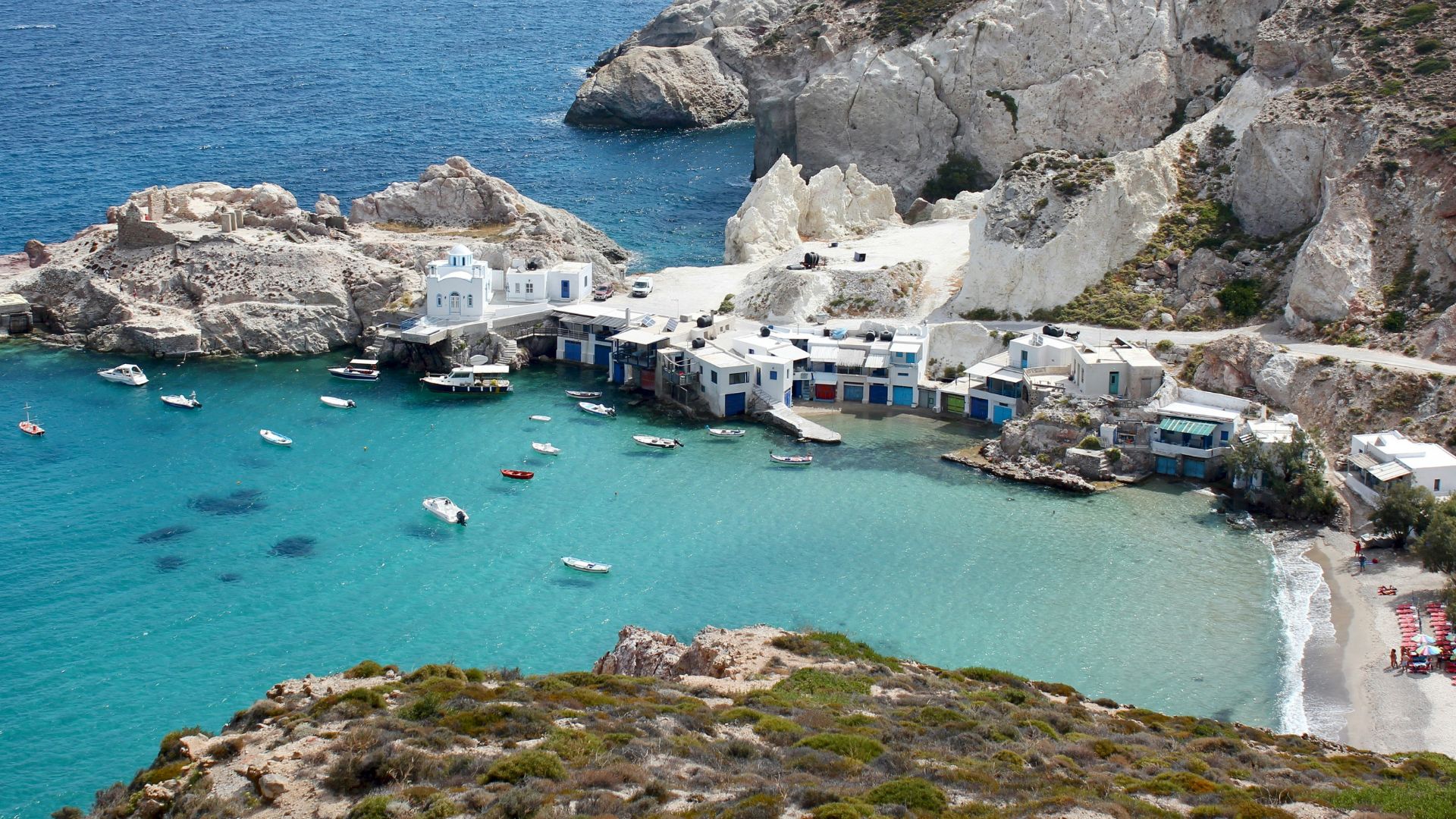
Discovering Klima: Where Color Paints the Shore
Klima is a tiny fishing village that honestly feels like someone dipped it in a box of crayons. Each building pops with its own shade—sunny yellow, sea-blue, pinks, greens—so every stroll feels different.
Strolls Along the Vibrant Syrmata
Walking by the water’s edge, I noticed each “syrma”—those little fishermen’s houses—lined up in a row like storybook cottages. Their doors and shutters burst with bright colors.
People say fishermen painted them so they could spot their own homes from the sea. The gentle sound of waves lapping on the steps adds to the calm.
Locals sometimes sit outside, chatting while they clean nets or fix boats. It’s easy to slow down and notice the details: faded paint, a loosely tied boat, shells scattered on a doorstep.
Many syrmata now have cozy rooms you can rent. Staying right on the water, opening a window to the sea breeze and cheerful colors outside, really lets you soak up the feel of Klima.
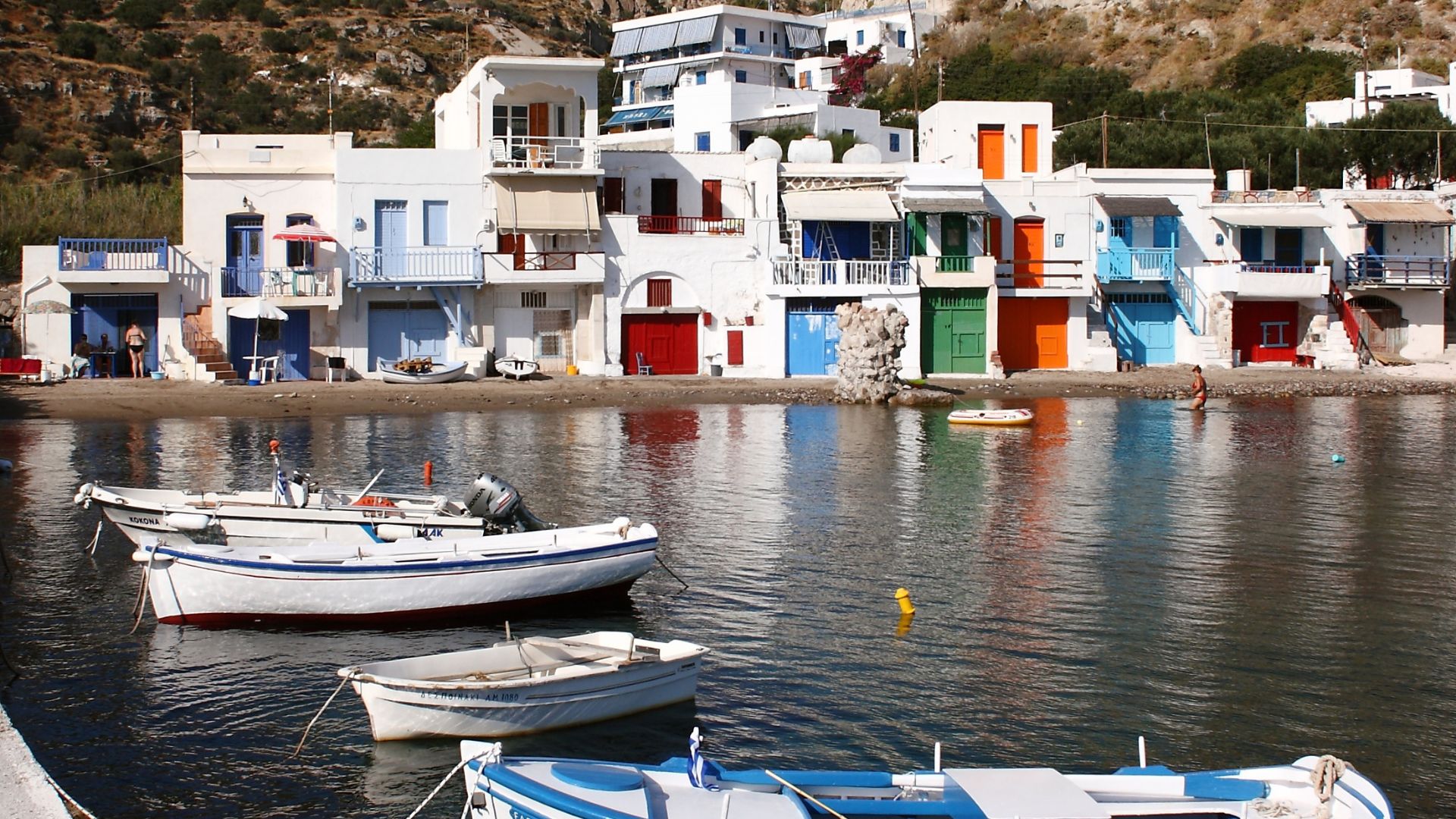
Local Traditions and Daily Life
Klima still hangs onto its fishing village roots. Some families have passed down their syrmata for generations.
The lower part of each house used to be a boat garage, while the upstairs was for living—practical and smart. In the early morning, I watched fishermen come in with the day’s catch, unloading their boats onto smooth rocks.
Locals greet each other with a quiet smile or a wave. Simple routines shape the day: preparing nets, repairing paint, or sharing a coffee by the shore.
Even as more visitors arrive, the spirit of Klima lives on in these everyday moments.
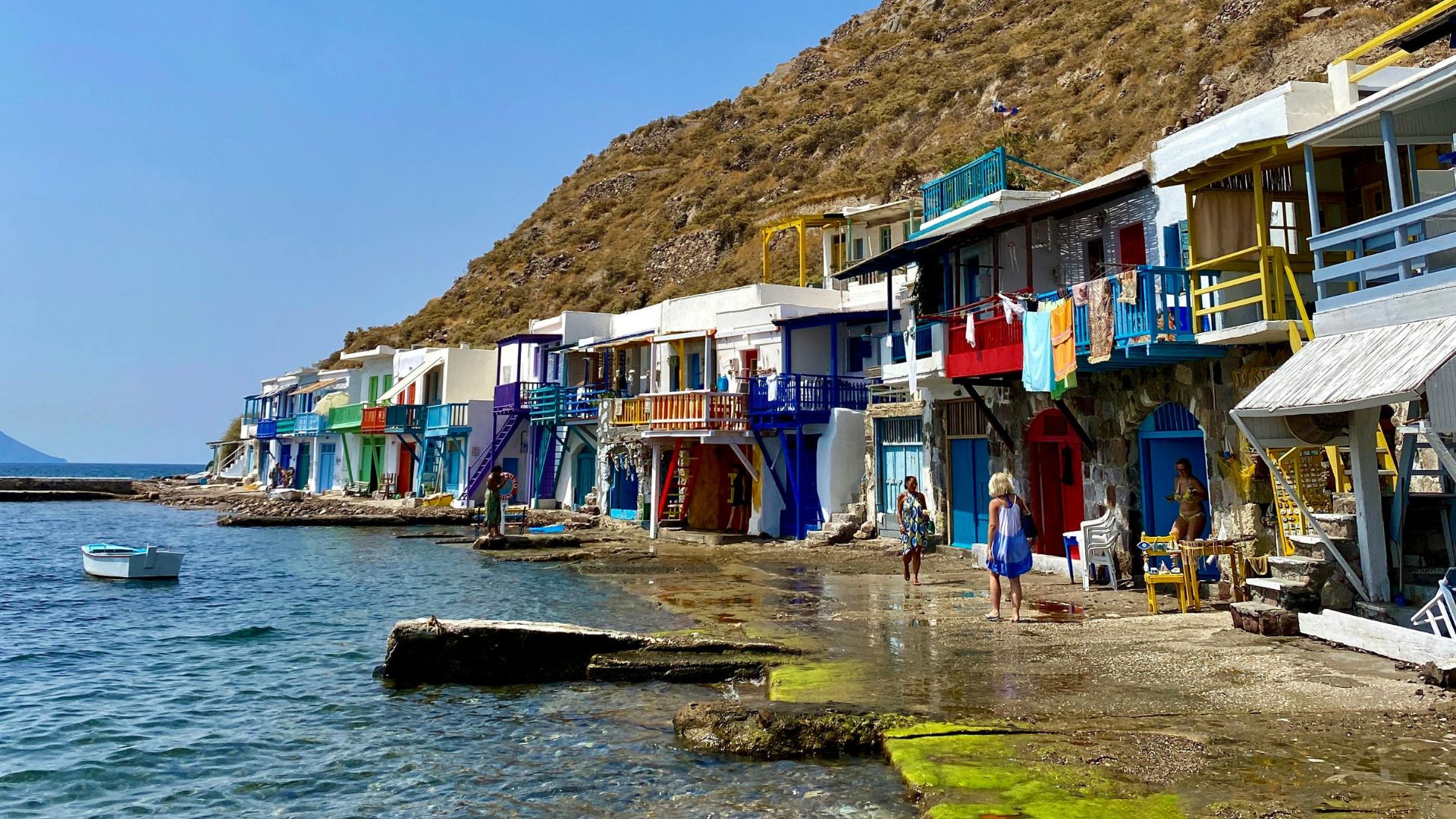
Capturing the Magic: Photo Spots and Sunset Views
If you love taking photos (or just want a good phone snap), Klima is a dream. The rows of colored syrmata look amazing at any time but really turn golden at sunset.
I found the best views by walking to the edge of the village, where the buildings meet the rocks.
A few favorite spots:
- Near the small white church, facing the village for a wide shot.
- Directly in front of the syrmata, where the colors reflect on the water late in the afternoon.
- During sunset, stand farther back for the dramatic sky and glowing houses.
Even without a camera, those moments just stick with you—the paint brightens, the sea glows, and the last light makes everything look like a painting.
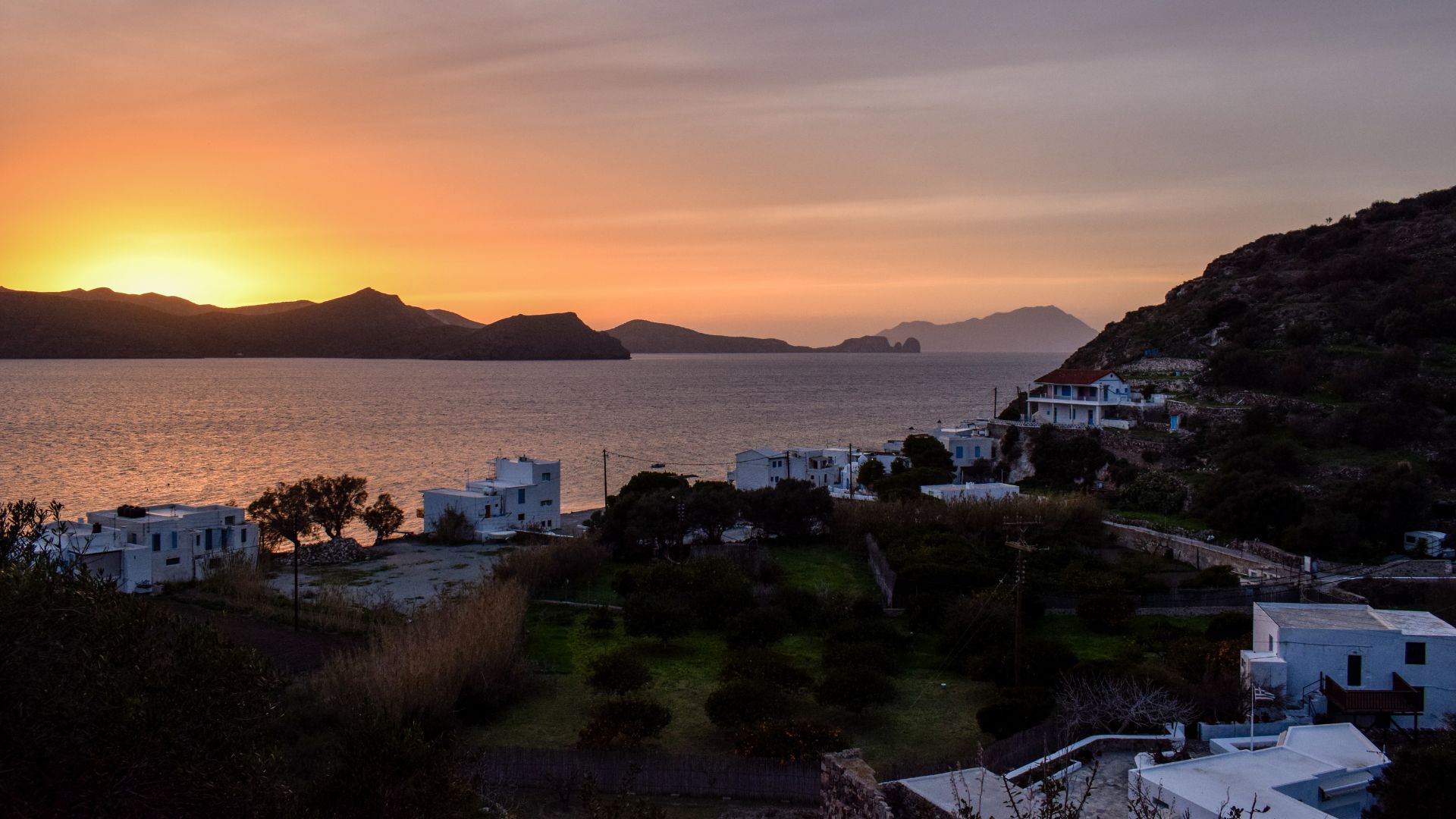
Fyropotamos: A Hidden Gem on Milos
Fyropotamos is a tiny fishing village that feels frozen in time. Its bright syrmata line a pebbly beach with turquoise water.
I found both beauty and peace here, plus some surprising little details tucked between the rocks.
A Walk Through Charming Lanes
Stepping into Fyropotamos, I saw fishermen’s huts with doors and shutters painted every color you can imagine—blue, green, red, yellow. The narrow lanes curve around the bay, and each turn reveals another splash of color or a boat pulled up on the sand.
Locals keep their spaces tidy and welcoming. Bougainvillea climbs over whitewashed walls, and fishing nets hang to dry on doorways.
As I wandered, I passed children playing beside their homes and saw older men quietly repairing nets or chatting outside.
The calm here is different. There are no loud crowds or busy shops. The scenery just invites slow walks, quiet observation, and casual snapshots.
Every corner of Fyropotamos asks you to pause and notice the details.
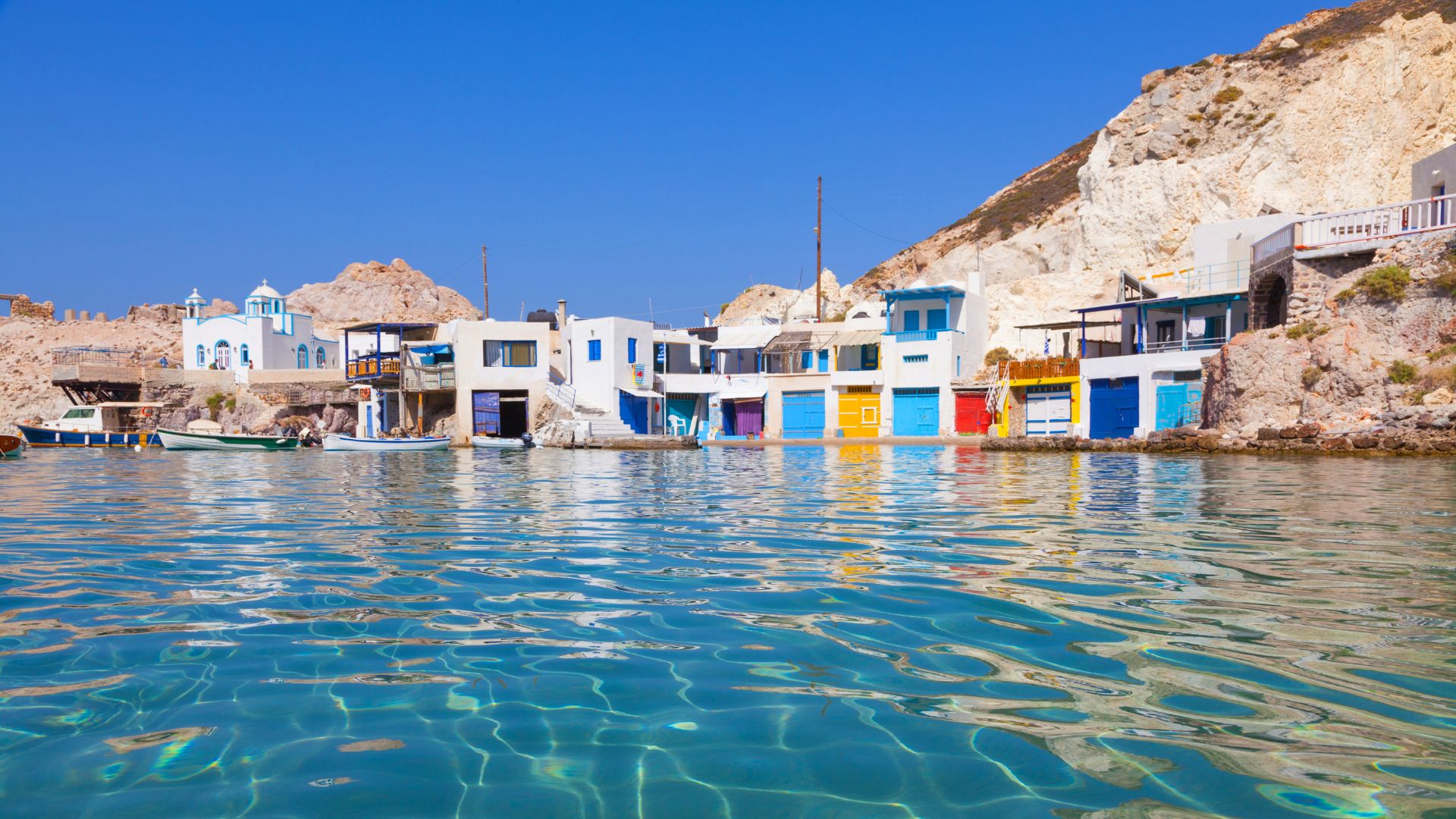
Swimming and Relaxation at Fyropotamos Beach
The bay at Fyropotamos is protected and crystal clear. I left my sandals at the edge of the beach, stepped into soft pebbles, and floated in blue-green water that felt as calm as a swimming pool.
Behind me, bright syrmata form a neat row right at the water’s edge. Some had boats parked below, while a few people read books in front of their doorsteps.
I found the water refreshing and free of crowds—perfect for unwinding after a busy day.
Visitors sometimes bring a picnic or a small folding chair. There aren’t any fancy beach bars here, but honestly, the peaceful setting makes up for it.
Swimming alongside the colorful houses feels special—like you’re sharing a piece of local tradition for an afternoon.
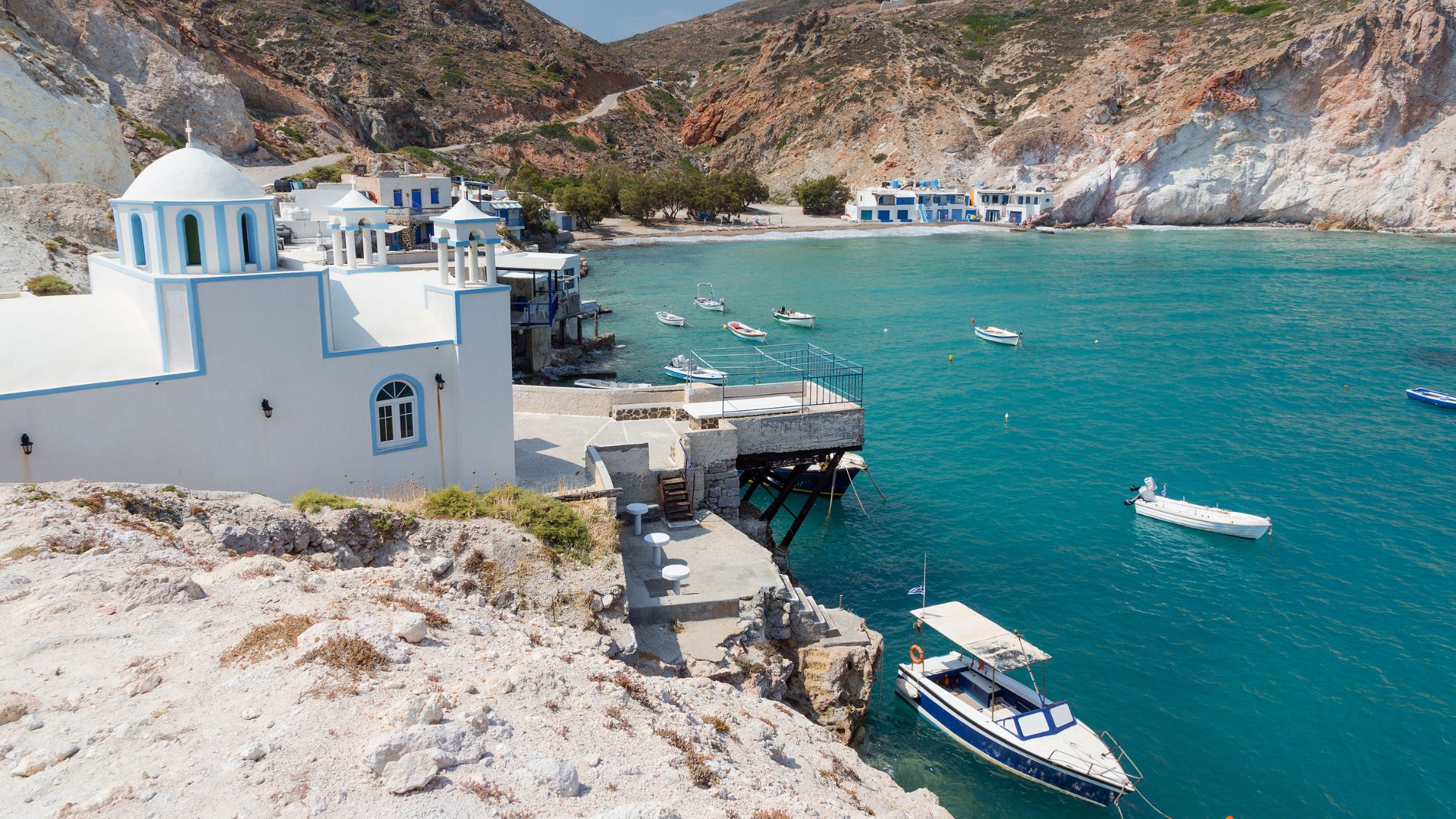
Quirky Details in Fishermen’s Cottages
The syrmata in Fyropotamos aren’t just photogenic—they’re packed with personality. Built into the rocks, these cottages have low stone ceilings and wooden doors that open almost directly onto the water.
Many are still used by families who fish every day. I spotted handmade signs, old oars used as coat racks, and bright fishing buoys acting as garden ornaments.
A few cottages display collections of painted stones or seashells in little windows. Each detail reflects the lives and tastes of the people who live here.
Some homeowners open their doors and let you peek inside. I remember one cottage filled with family mementos and framed photos of big catches from decades ago.
Fyropotamos isn’t just a place to visit—it feels like a living museum of fishing life, kept alive by its residents.
Syrmata Villages: The Heart of Milos’ Fishing Heritage
As I walked through Klima and Fyropotamos, I found myself surrounded by the distinct charm of syrmata fishing houses. The splashes of color on every door and balcony, and the gentle sound of boats in the water, just make these villages stand out.
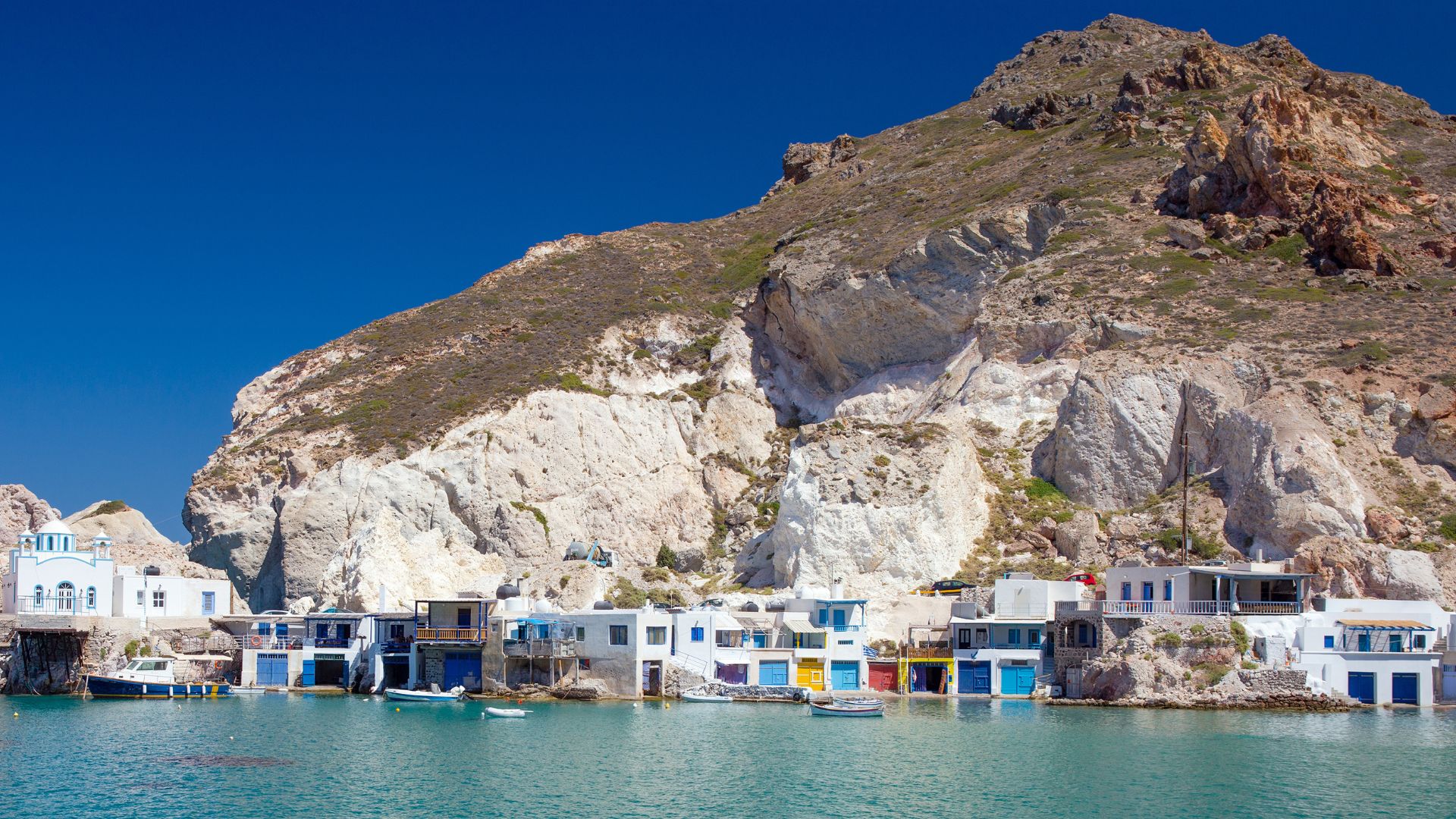
History Behind the Colorful Doors
Syrmata (σύρματα) are traditional fishermen’s houses built right by the sea. The name comes from the Greek word for “dragging,” because fishermen used to haul their boats into these houses to protect them from storms.
Most of these homes date back to the 19th and early 20th centuries, when fishing was how locals made a living in Milos. Each family picked a different color for their doors and balconies.
This helped fishermen spot their houses quickly when coming back from the sea. As I walked along the narrow pathways, these bright doors made the whole village look alive.
Today, many locals keep up this tradition, keeping the village vibrantly painted and closely tied to its past.
Syrmata Architecture and Restoration
Syrmata houses sit right on the shoreline, with the boat garage on the ground level and the living area upstairs. Boat garages open with sturdy wooden doors, while compact stairs outside lead to small balconies over the water.
The stone walls are thick to protect from the sea. Many syrmata have been restored, blending old designs with modern comforts.
Some are still used by fishing families; others have become cozy guesthouses for visitors. Restoration efforts focus on saving the bright colors and original features, while making sure the buildings stay strong against the salty air and waves.
This careful balance keeps Klima and Fyropotamos feeling authentic—a direct link to Milos’ fishing roots.
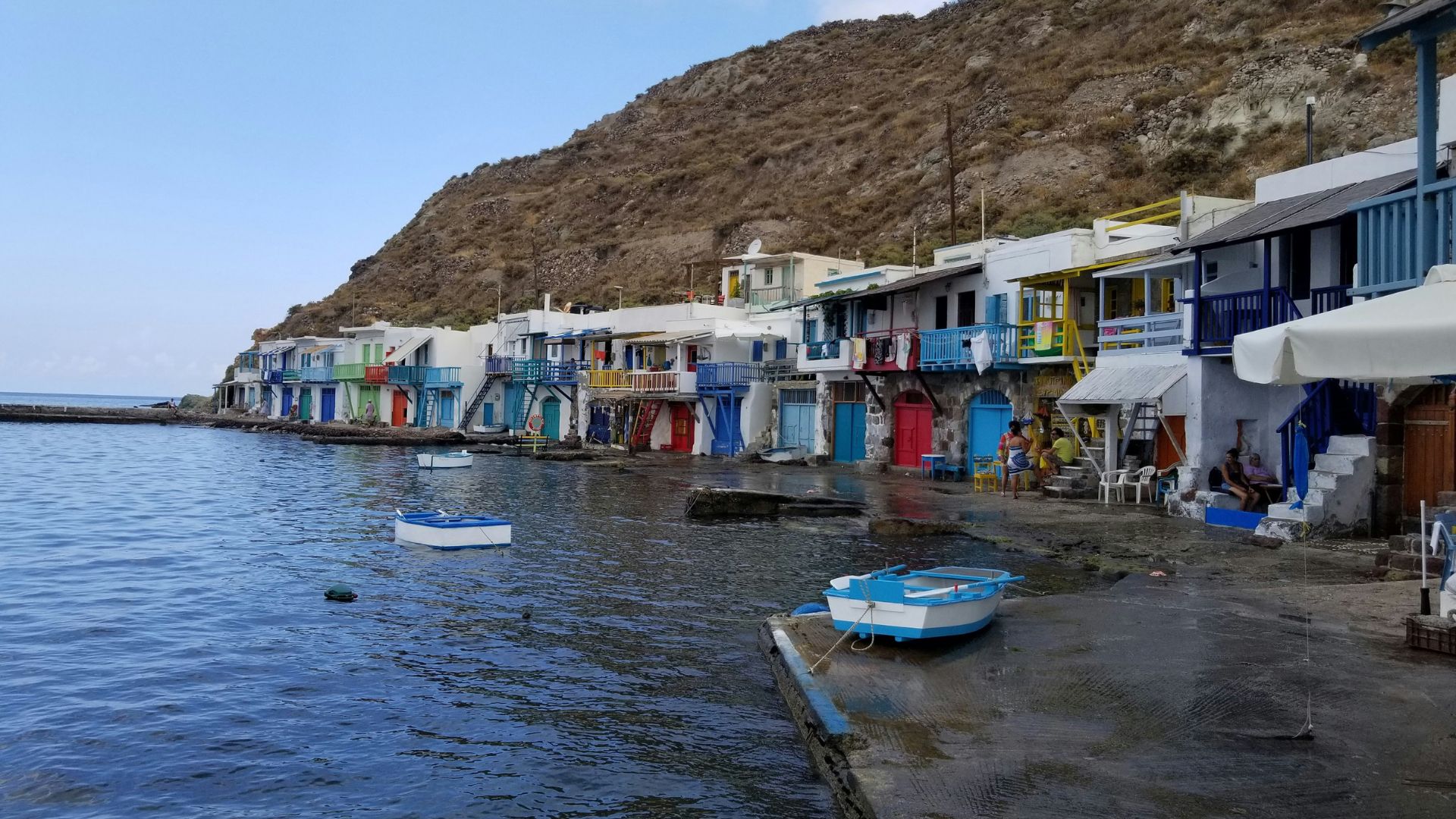
Planning Your Colorful Milos Exploration
When I decided to explore Milos, I realized a little planning helped a lot. Figuring out transport and timing those perfect photo moments made all the difference in experiencing the beauty and charm of the island’s fishing villages.
Getting to Klima & Fyropotamos
Reaching Klima and Fyropotamos is simple if you know your options. Since these villages don’t have an airport, most travelers (like me) arrive first in Adamantas, the island’s main port.
From Adamantas, I took a rental car, but you can also grab a taxi or hop on a local bus. Buses run less often, so checking schedules ahead of time saved me some headaches.
Distance Table
| Location | Klima (km) | Fyropotamos (km) |
|---|---|---|
| Adamantas | 5 | 6 |
| Plaka | 3 | 5 |
For more flexibility, I sometimes picked a scooter—it’s a fun way to take in the coastal views and stop for photos whenever you want. Parking is usually available at the edge of both villages, though spaces fill up quickly in busy months.
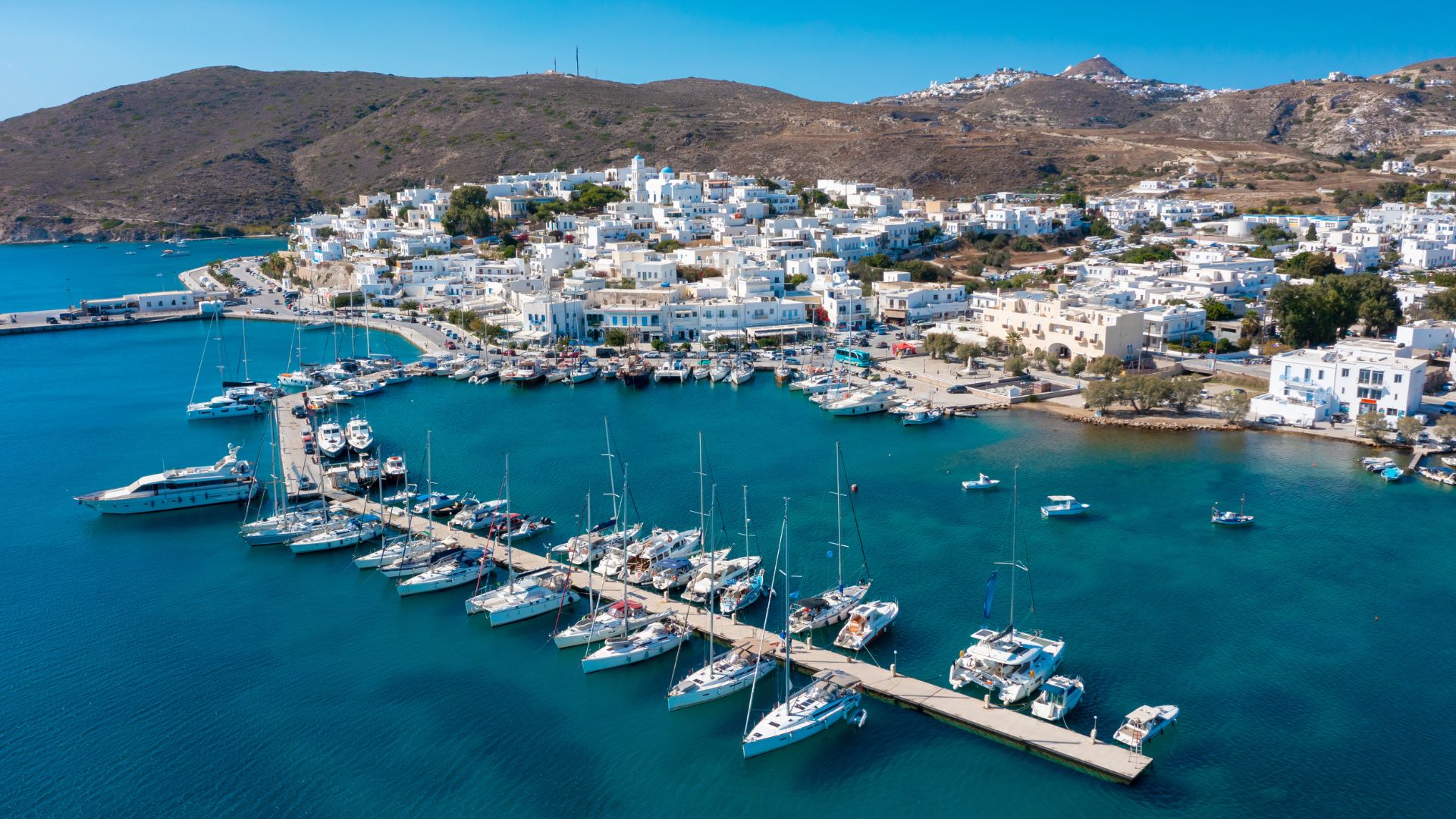
Best Times to Visit for Ultimate Picturesqueness
Timing really matters if you want to see Klima and Fyropotamos at their best. Early summer (May to June) and early fall (September) bring mild weather, fewer tourists, and the best light for photography.
The colorful syrmata—those fishermen’s houses—just glow in the soft golden hour light at sunrise or before sunset.
High season, from July to August, brings bigger crowds and hotter days. While the atmosphere is lively, I found the quieter shoulder months more peaceful and even more photogenic.
I always check the local weather forecast, since the Aegean sun can be intense, and shady spots are rare.
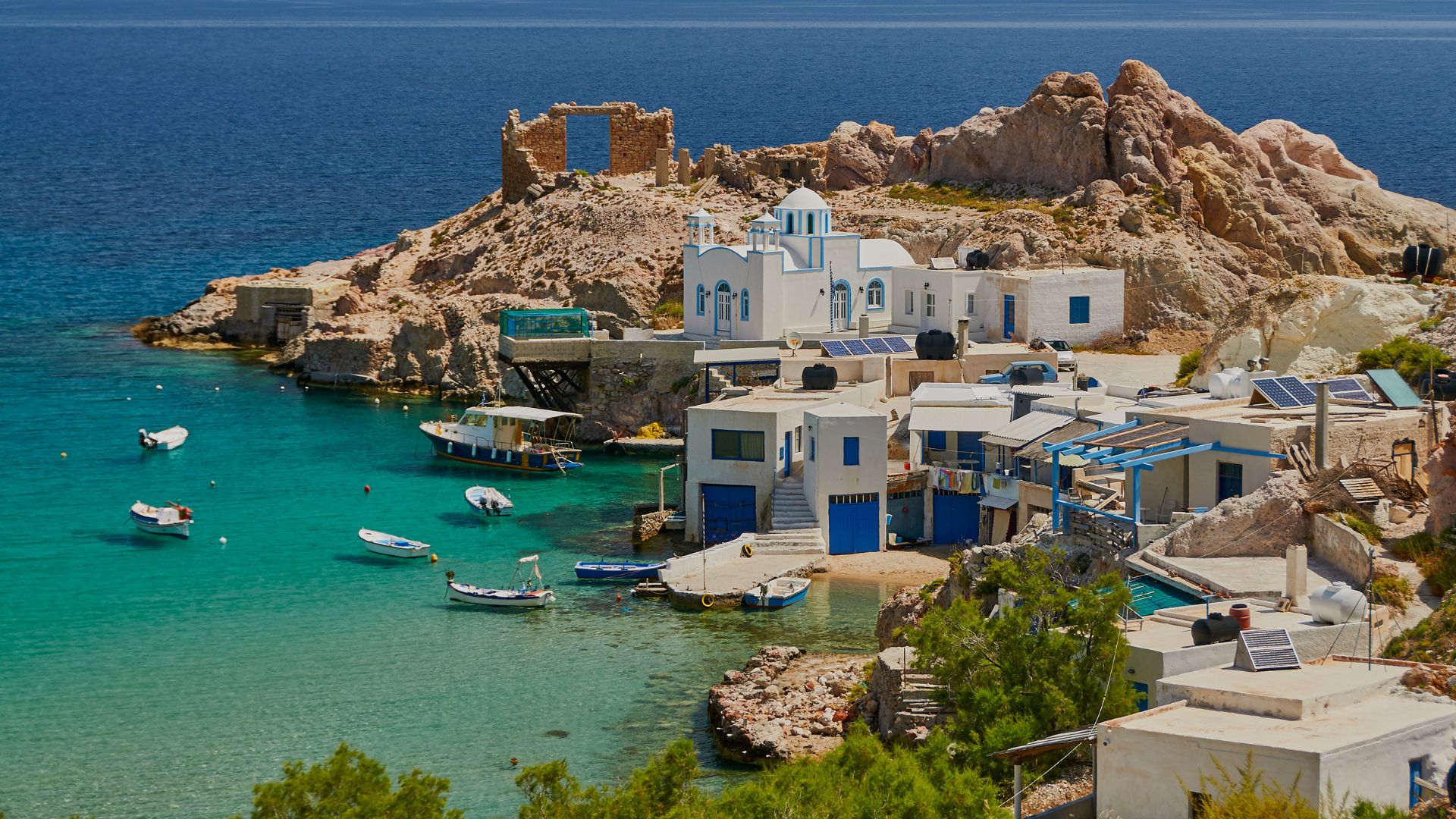
Essential Tips for Travelers
Packing for these villages is pretty easy, but I never skip a few essentials. Comfortable walking shoes are a must—the paths are narrow and sometimes uneven, especially near the water.
I always bring sunscreen, a hat, and a reusable water bottle because shade is limited. In Klima, restaurants by the sea serve up fresh seafood.
I made reservations in advance to snag a table with a view. Both villages are compact, so I set aside extra time to wander, snap photos, and just enjoy the relaxed pace.
If you’re into local history, look up the story behind the syrmata—the brightly painted boathouses built into the rocks, still used by fishermen today.

Beyond the Postcards: Local Cuisine and Culture
When I wandered the narrow lanes between Klima’s painted boathouses and the white-washed cottages of Fyropotamos, I didn’t just find pretty views—I got a taste of village life. Tasting local dishes and joining in village events let me discover a warm, authentic side to Milos that goes way beyond the photos.
Tasting the Flavors of Milos
Fresh seafood steals the show in these fishing villages. I tried grilled octopus straight from the sea, and wow—it was so much more tender than anywhere else.
Small seaside tavernas served bowls of kakavia (fish soup), full of local catch and bright island herbs. Local cheeses surprised me, too.
A soft, tangy xynomizithra often topped tomatoes and olives on crusty bread. For dessert, I loved karpouzopita, a sweet watermelon pie that only appears in summer.
Locals always paired meals with a glass of cold raki or homemade wine, making every meal feel like a celebration.
Here’s a quick list of dishes to try:
- Kakavia (Fish Soup)
- Grilled Octopus
- Xynomizithra Cheese
- Karpouzopita (Watermelon Pie)
- Homemade Raki
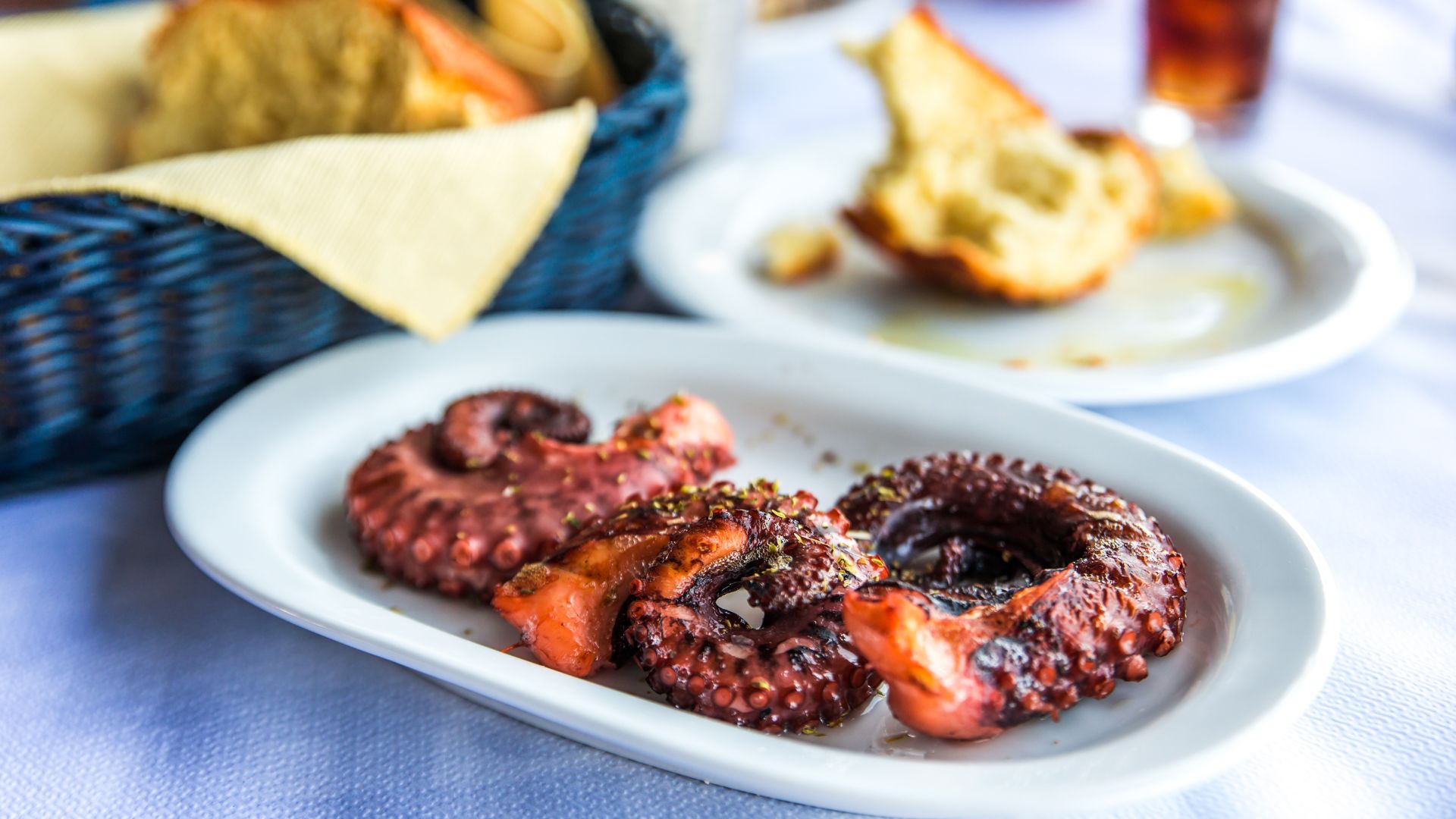

Festivals and Seaside Celebrations
I showed up just in time for a small religious festival at a little chapel by the sea. Villagers wore their best clothes and walked along the shore with icons and flowers.
When night came, the courtyard buzzed with music and dancing. I ended up at a table with families, sharing platters of food and clapping to the beat of island songs.
These celebrations usually pop up in the summer or on saints’ feast days. Fishermen go all out, decorating their boats, while kids dart up and down the beach.
Everyone brings homemade treats. Sometimes, open-air markets appear with crafts, sweets, and jars of local honey.
Even as a visitor, I felt like I belonged. I walked away with new friends and some pretty great memories.
Joining these traditions made Klima and Fyropotamos come alive for me. They’re so much more than just postcard scenes.

